Volba mezi integrovanými vázáními, samostatnými vázáními nebo prozkoumání unikátní Snowfeet variantou bez vázání může ovlivnit váš lyžařský zážitek, bezpečnost a rozpočet. Zde je rychlý přehled, který vám pomůže rozhodnout:
- Integrovaná vázání: Předinstalovaná výrobcem, jsou pohodlná, cenově dostupná a skvělá pro začátečníky, kteří milují upravené sjezdovky. Nevýhody zahrnují omezené přizpůsobení, větší hmotnost a sníženou flexibilitu.
- Samostatná vázání: Zakoupená a namontovaná zvlášť, nabízejí plné přizpůsobení, lepší flexi lyží a vhodnost pro různorodý terén jako volný terén nebo prašan. Vyžadují však profesionální instalaci, jsou dražší a potřebují pravidelnou údržbu.
- Snowfeet: Varianta bez vázání, která funguje s běžnou zimní obuví. Kompaktní, přenosné a snadno použitelné, jsou ideální pro příležitostné sněhové dobrodružství a úzké prostory, ale nemusí vyhovovat pokročilým lyžařům nebo extrémním podmínkám.
Rychlé srovnání
| Funkce | Integrované vázání | Oddělené vázání | Snowfeet |
|---|---|---|---|
| Složitost nastavení | Připraveno k použití | Vyžaduje profesionální montáž | Není potřeba žádné nastavování |
| Přizpůsobení | Omezená | Plná kontrola | Žádné |
| Vhodnost terénu | Upravené sjezdovky | Různorodý terén (volný terén, park) | Sjezdovky, parky, stezky, dvorky |
| Hmotnost | Těžší | Lehčí | Velmi lehké |
| Cena | Dostupné | Vyšší | $150–$599 |
| Přenosnost | Vyžaduje lyžařské vaky | Vyžaduje lyžařské vaky | Vejde se do batohu |
Hlavní závěr
Pokud jste začátečník nebo rekreační lyžař, integrovaná vázání nebo Snowfeet nabízejí jednoduchost a dostupnost. Pokročilí lyžaři nebo ti, kteří zkoumají různý terén, mohou preferovat výkon a flexibilitu samostatných vázání. Pro zábavnou, přenosnou a bezstarostnou alternativu nabízí Snowfeet nový přístup k zimním sportům.
Než koupíte lyžařská vázání, podívejte se na tohle
Integrovaná vázání: klady a zápory
Integrovaná vázání jsou továrně namontovaný, připravený balíček, který může lyžařům usnadnit život. Ale jako většina věcí mají své výhody i nevýhody.
Výhody integrovaných vázání
Pohodlí je velká věc. U integrovaných vázání není potřeba samostatná montáž - jsou předinstalovaná ve výrobě. To znamená, že můžete přeskočit přípravu a rovnou vyrazit na svah.
Zlepšený carvingový výkon. Tyto systémy umisťují vázání výše, což vám dává lepší páku na hrany. To může udělat carving na upravených sjezdovkách hladším a přesnějším, proto jsou oblíbená u lyžařů zaměřených na čisté a kontrolované oblouky na přední straně svahu.
Šetrná k rozpočtu a vhodná pro začátečníky. Integrované sestavy jsou často levnější než samostatná vázání. Navíc jsou odpouštějící, což je skvělé pro ty, kteří právě začínají. Když budete chtít prodat, další lyžař obvykle jen upraví vázání, nemusí je znovu montovat.
Ale i když jsou pohodlná, nejsou bez svých omezení.
Nevýhody integrovaných vázání
Omezené přizpůsobení a kompatibilita bot. Protože je vázání předem vybráno výrobcem, jste omezeni na to, co je součástí. To může být frustrující, pokud chcete svůj setup upravit nebo pokud vaše boty nejsou v běžném rozsahu velikostí.
Dodatečná hmotnost a tuhost. Integrovaná vázání bývají těžší a deska může zpevnit přirozený flex lyže. To nemusí vadit rekreačním lyžařům, ale je to něco, co je třeba zvážit, pokud chcete maximální výkon.
Problémy s delta vázáním. Lyžař David Chaus zdůrazňuje běžnou nevýhodu:
"Jedním z problémů systémového vázání může být delta vázání (rozdíl mezi výškou kontaktu boty na patní části a výškou kontaktu boty na špičce). Preferuji delta 0-2 mm, a některá systémová vázání mají kolem 5 mm nebo více. Obvykle to nelze u systémového vázání změnit, zvláště pokud je deska zabudovaná do lyže."
Omezení terénu. Tato vázání se obvykle nacházejí na carvingových nebo all-mountain carvingových lyžích. Pokud chcete vyrazit do specializovaných setupů jako Telemark nebo Alpine Touring (AT), integrovaná vázání pro vás nebudou vhodná.
Zde je rychlý přehled výhod a nevýhod:
Srovnávací tabulka: Integrovaná vázání
| Výhody | Nevýhody |
|---|---|
| Připraveno k lyžování ihned po vybalení | Žádná volba nebo přizpůsobení vázání |
| Lepší páka pro carving | Omezená kompatibilita velikosti bot |
| Finančně dostupné pro začátečníky | Těžší než samostatné systémy |
| Snazší proces prodeje | Zpevněný flex lyže pod nohou |
| Není potřeba montáž | Pevně nastavené delta hodnoty vázání |
| Více odpouštějící pro začínající lyžaře | Nevhodné pro AT/Telemark |
Integrované vázání je ideální pro rekreační lyžaře, kteří oceňují snadné použití a drží se upravených tratí. Pokud však hledáte specifické vylepšení výkonu nebo chcete objevovat terén mimo sjezdovky, možná budete chtít hledat jinde. Pro ty, kteří chtějí úplnou svobodu bez omezení vázání, nabízí Snowfeet* jedinečnou alternativu, která se těmto omezením vyhýbá.
Samostatná vázání: výhody a nevýhody
Samostatná vázání vám umožňují vytvořit lyžařský set přesně podle vašich představ. Na rozdíl od integrovaných systémů se tato vázání kupují a montují jednotlivě, což nabízí spoustu možností přizpůsobení. Ale přinášejí také několik překážek.
Výhody samostatných vázání
Úplná kontrola nad přizpůsobením. Se samostatnými vázáními si můžete ručně vybrat komponenty, které odpovídají vašim potřebám. Různé značky nabízejí různé úrovně citlivosti, takže si můžete svůj set doladit podle faktorů jako je vaše velikost, věk a styl lyžování.
Skvělé pro různorodý terén. Samostatná vázání vynikají za specifických podmínek:
"Ploché lyže vám nabídnou téměř vše ostatní. Boule. Prašan. Lesy. Park. Túry. Terén. Ano, ploché lyže mohou zatáčet, i když obecně ne tak efektivně a účinně jako systémové lyže."
Tato všestrannost je obzvlášť cenná pro lyžování v terénu a túry, kde specializované konstrukce usnadňují výstup.
Lepší flexe a pocit z lyží. Protože tato vázání používají samostatné části na špičku a patu místo jedné desky, vaše lyže mohou přirozeněji flexovat. To vám poskytuje živější a citlivější zážitek na svahu.
Lehčí váha. Samostatná vázání snižují váhu, což usnadňuje manévrování v těsných místech, jako jsou boule nebo lesní sjezdovky.
Snadné upgrady. Pokud se změní váš styl lyžování nebo získáte nové boty, můžete vázání vyměnit bez nutnosti měnit celý lyžařský set.
Nevýhody samostatných vázání
Samostatná vázání mají své výhody, ale nejsou bez nevýhod.
Vyžaduje profesionální instalaci. Montáž samostatných vázání vyžaduje přesnou práci certifikovaného technika. Špatná instalace může ovlivnit funkci uvolnění a zvýšit riziko zranění. Za profesionální montáž v nejlepších lyžařských obchodech očekávejte cenu kolem 50 dolarů.
Problémy s kompatibilitou. Studie ukazují, že 91 % Alpine Touring (AT) bot se neuvolnilo při správné zátěži při testování s alpskými vázáními, zatímco 43 % alpských vázání se při zatížení poškodilo. AT rámová vázání měla také 25% míru selhání. Tyto problémy mohou ztížit nalezení správného vybavení.
Bezpečnostní obavy. Správné nastavení hodnoty DIN je zásadní. Začátečníci potřebují nižší nastavení pro snadnější uvolnění, zatímco agresivnější lyžaři vyžadují vyšší nastavení, aby se zabránilo nechtěnému uvolnění. Chyby v těchto nastaveních mohou být nebezpečné. Navíc samonastavitelné vázání může v případě nehody představovat právní riziko.
Vyšší náklady a údržba. Samostatné sady vázání často stojí více než integrované systémy. Také vyžadují pravidelné kontroly pro zajištění bezpečnosti a opakované přemontování může časem oslabit vaše lyže.
Vyžaduje technické znalosti. Budete muset zkontrolovat kompatibilitu bot, sladit šířku brzdy vázání s šířkou lyže a porozumět různým vzorům montáže před nákupem.
Srovnávací tabulka: Samostatná vázání
Zde je rychlý přehled výhod a nevýhod:
| Výhody | Nevýhody |
|---|---|
| Plná kontrola přizpůsobení | Vyžaduje profesionální instalaci (~50 USD) |
| Vyniká v různorodém terénu (volný terén, park, prašan) | Problémy s kompatibilitou mohou být složité |
| Lepší flexe a citlivost lyže | Vyšší celkové náklady |
| Lehká pro lepší ovladatelnost | Bezpečnostní rizika při nesprávném nastavení |
| Snadná výměna vázání | Vyžaduje pravidelnou údržbu |
| Možnosti ladění výkonu | Vyžaduje technické znalosti |
Samostatná vázání jsou ideální pro lyžaře, kteří chtějí špičkový výkon a možnost přizpůsobení. Jejich složitost, cena a bezpečnostní výzvy je však mohou činit méně atraktivními pro rekreační lyžaře. Pro ty, kteří hledají jednodušší možnost, nabízí produkty Snowfeet* bezstarostnou alternativu s vynikajícím výkonem, což je činí oblíbenou volbou jak pro začátečníky, tak pro zkušené lyžaře.
sbb-itb-17ade95
Snowfeet*: Odvážná alternativa k tradičním lyžím
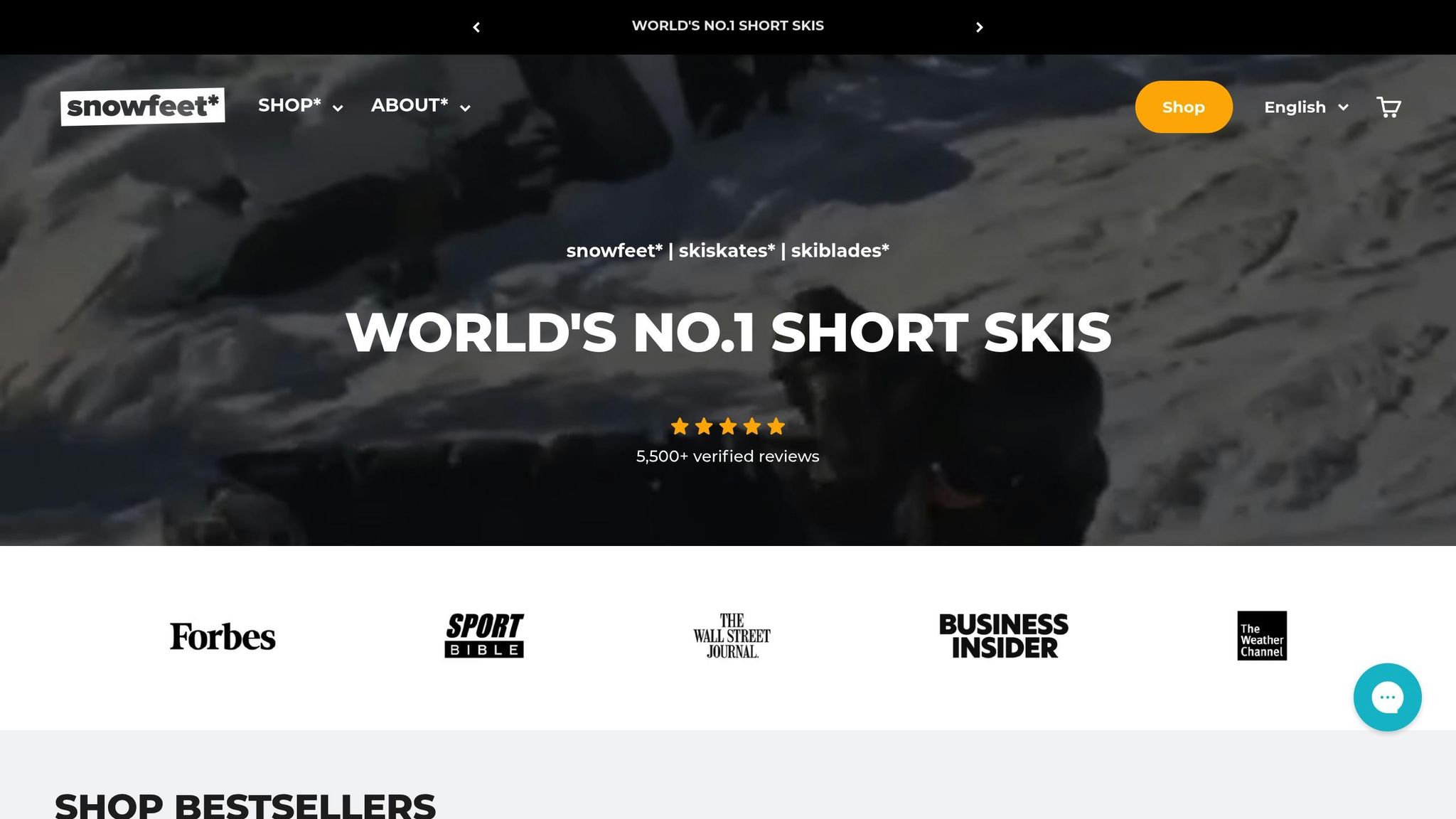
Zatímco lyžaři často diskutují o výhodách a nevýhodách integrovaných versus samostatných vázání, Snowfeet* zvolil zcela jinou cestu - úplné opuštění vázání. Tím, že řeší běžné problémy s lyžařským vybavením, jako jsou problémy s kompatibilitou a vysoké náklady, nabízí Snowfeet* jednoduchou a bezproblémovou možnost, která se odlišuje od tradičních systémů nabízených značkami jako Rossignol, Atomic a Head.
Žádné vázání, žádné starosti
Produkty Snowfeet* se připevňují přímo na vaši zimní obuv, takže nastavování vázání je minulostí. Rozlučte se s DIN nastavením, poplatky za montáž a problémy s kompatibilitou bot. Ať už preferujete kompaktní 38 CM Mini Ski Skates nebo delší 99 CM Skiblades (za cenu 490,00 $), získáte systém připravený k použití hned po vybalení.
Vybavené vestavěnými kovovými hranami pro snadné zastavení, design nejen zjednodušuje lyžování, ale také zapojuje váš střed těla způsobem, který tradiční lyže nemohou nabídnout. Navíc minimalistický přístup je činí neuvěřitelně přenosnými.
Snadné nošení, snadné použití
Na rozdíl od tradičních lyží, které vyžadují objemné střešní nosiče nebo lyžařské vaky, produkty Snowfeet* se pohodlně vejdou do batohu. Díky tomu jsou ideální pro spontánní sněhová dobrodružství, ať už vyrážíte na sjezdovky, objevujete snowparky, putujete po stezkách nebo si jen hrajete na místním sáňkařském kopci.
Snowfeet* je navržen tak, aby seděl na velikosti bot 6–13 US (38–47 EU) a funguje pro všechny věkové kategorie. Jeho praktičnost a přenosnost získaly široké uznání:
"Snad jeden z nejlepších nákupů, jaké jsem kdy udělala." - Vanessa, UK
Kompaktní design nejen usnadňuje přepravu, ale také zlepšuje výkon na sněhu.
Zábava potkává výkon
Zatímco tradiční lyžařské značky jako Elan a Head se zaměřují na delší, tužší designy, Snowfeet* dokazuje, že kratší lyže mohou nabídnout stejně tolik zábavy – ne-li více. Kombinací prvků lyžování a bruslení vytváří Snowfeet* nový zimní sportovní zážitek, který zpochybňuje zavedené normy.
Recenze mluví za vše:
"Nikdy se nevrátím k původním lyžím." - Andrew B.
"Největší zábava, jakou jsem kdy na sněhu zažil." - Nathan F.
Se více než 5 500 ověřenými recenzemi se produkty Snowfeet*, jako jsou 65 CM Skiblades, pyšní perfektním hodnocením 5,0/5, zatímco 50 CM Ski Skates a 38 CM Mini Ski Skates si udržují působivé skóre 4,9/5. Jsou vítány na většině lyžařských středisek a nabízejí nepřekonatelnou ovladatelnost a svobodu ve srovnání s tradičními sestavami.
Snowfeet* vs. Tradiční lyžařské systémy
Zde je rychlý přehled, jak si Snowfeet* stojí ve srovnání s konvenčními lyžařskými systémy:
| Funkce | Integrované vázání | Oddělené vázání | Snowfeet* |
|---|---|---|---|
| Složitost nastavení | Systém namontovaný ve výrobě | Vyžaduje profesionální úpravu | Není potřeba žádné nastavování |
| Kompatibilita bot | Omezeno na specifické boty | Často omezená kompatibilita | Funguje s jakoukoli zimní obuví |
| Přenosnost | Vyžaduje lyžařské tašky/střešní nosiče | Vyžaduje lyžařské tašky/střešní nosiče | Ultra přenosné – vejde se do batohu |
| Univerzálnost | Nejlepší pro upravené svahy | Liší se podle značky | Skvělé na svahy, do parků, na stezky i na dvorky |
| Hodnocení zákazníků | Liší se podle značky | Liší se podle značky | 4,9–5,0/5 hvězdiček |
Klíčové faktory při výběru zimního vybavení
Při výběru zimního vybavení záleží na třech hlavních faktorech: vaší úrovni dovedností, typu terénu, který preferujete, a vašem rozpočtu. Tyto prvky vám pomohou rozhodnout, zda jsou pro vás vhodná integrovaná vázání, samostatná vázání nebo produkty Snowfeet*. Pojďme si to rozebrat.
Úroveň dovedností a zkušenosti
Vaše zkušenosti na svazích by měly řídit výběr vybavení. Pro začátečníky je nejlepší volbou měkčí a více odpouštějící vybavení. Integrované vázání nebo produkty Snowfeet* jsou skvělé možnosti, protože jsou jednoduché a snadno se nastavují, což je ideální pro ty, kteří právě začínají.
Pokud jste na středně pokročilé úrovni, možná hledáte vybavení, které zvládne větší rychlost a umožní vám vyzkoušet si prvky terénního parku. Produkty Snowfeet* zde vynikají, nabízejí lepší ovladatelnost a zároveň jsou uživatelsky přívětivé. Například 65 CM Skiblades od Snowfeet* kombinují carvingovou schopnost s kontrolou, což z nich dělá solidní volbu pro jezdce, kteří chtějí posunout své dovednosti dál.
Pokročilí lyžaři obvykle požadují špičkový výkon a mohou preferovat oddělená vázání pro maximální přizpůsobení. Nicméně i zkušení jezdci někdy ocení svěží přístup a jednoduchost produktů Snowfeet*. Nabízejí rovnováhu mezi inovací a výkonem.
Pro experty je klíčová přesnost a špičková technologie. Tito jezdci často volí tuhé, vysoce výkonné sestavy. Přesto produkty Snowfeet* obvykle nejsou první volbou pro „vážné skiboardisty“, kteří upřednostňují závody nebo extrémní terény.
Teď se podívejme, jak váš oblíbený terén ovlivňuje výběr vybavení.
Terén a aktivita
Druh terénu, na kterém rádi lyžujete, hraje velkou roli při výběru správného vybavení. Systémové lyže s integrovanými vázáními jsou ideální pro carving na upravených svazích. Jsou skvělou volbou pro lyžování v resortech, i když nemusí být tak přizpůsobivé různým podmínkám. Naopak ploché lyže s oddělenými vázáními vynikají v parcích, lesích, prašanu, v backcountry i při skitouringu. Tradiční značky zde cílí na specifické potřeby: rámová vázání jsou ideální pro resorty, zatímco hybridní vázání představují kompromis pro resort i backcountry dobrodružství.
Produkty Snowfeet* však vynikají svou všestranností. Jsou navrženy tak, aby zvládly upravené svahy, parky, stezky a dokonce i běžné sněhové dobrodružství. Díky kompaktní velikosti zvládnou terény, na které delší lyže nestačí, jako jsou úzké průjezdy mezi stromy, malé kopce a městské sněhové plochy. Snowfeet* usnadňují objevování různých terénů bez potřeby vázání, což odpovídá jejich multifunkčnímu designu.
Rozpočet a hodnota
Buďme upřímní - váš rozpočet často rozhoduje. Právě zde produkty Snowfeet* opravdu vynikají. Jsou výrazně dostupnější než tradiční lyžařské vybavení, s cenami od 150 do 599,90 dolarů. Porovnejte to s cenou kompletního vybavení od značek jako Atomic nebo Rossignol, které se snadno pohybují mezi 600 a 2 500 dolary. Rozdíl je obrovský.
Pro rodiny jsou Snowfeet* short skis cenově dostupnou volbou pro děti, která nabízí všestrannost bez velkých výdajů. Díky kompaktnímu designu a multifunkčnímu provedení přinášejí produkty Snowfeet* zábavu i praktičnost za zlomek ceny. Je to výhra pro každého, kdo chce vyrazit na svah, aniž by utratil příliš.
Závěr
Shrnutí klíčových bodů
Při výběru mezi integrovanými vázáními, samostatnými vázáními a produkty Snowfeet* má každá možnost své výhody. Integrovaná vázání jsou o jednoduchosti - snadná instalace s pevnou konstrukcí. Naopak samostatná vázání umožňují přizpůsobení, ale vyžadují profesionální montáž.
Pak jsou tu produkty Snowfeet*, které úplně vynechávají vázání a zaměřují se na flexibilitu. Tyto kompaktní možnosti bez vázání fungují s jakoukoli zimní obuví, což je ideální pro spontánní sněhová dobrodružství. Navíc snadno zvládají různé sněhové podmínky a terény. A nezapomeňme na jejich přenosnost - strčíte je do batohu a jste připraveni vyrazit. Ceny se pohybují od 150 do 690 dolarů, takže je tu něco pro každý rozpočet.
Závěrečná doporučení
Správná volba závisí nakonec na vašem stylu lyžování a potřebách. Přesto produkty Snowfeet* vynikají jako fantastická volba pro většinu milovníků zimních sportů. Pokud začínáte, 38 CM Mini Ski Skates jsou cenově dostupné a vhodné pro začátečníky. Pokročilejší lyžaři ocení všestrannost 65 CM Skiblades, které zvládnou různé terény.
Pro ty, kdo touží po dobrodružství a objevování nových tras, produkty Snowfeet* otevírají možnosti, které tradiční dlouhé lyže prostě nemohou nabídnout. Představte si, že kloužete po úzkých turistických stezkách, zvládáte rychlé sjezdy na malých kopcích nebo dokonce předvádíte triky, které jsou s konvenčními lyžemi těžké. 44 CM Skiskates s profesionální dřevěnou konstrukcí jsou skvělou volbou pro vážnější akci na svahu.
Snowfeet* je o tom, jak prolomit stereotypy tradičního lyžování. Místo abyste se zabývali debatou o integrovaných nebo samostatných vázáních, můžete se soustředit na to, co je opravdu důležité - zábavu na sněhu. Ať už vyrážíte na sjezdovky, stezky nebo do zahrady, produkty Snowfeet* přinášejí svobodu a všestrannost do zimních sportů.
Při rozhodování zvažte svůj rozpočet, úroveň dovedností a typ sněhových dobrodružství, o kterých sníte. Pro většinu lidí představují Snowfeet* dokonalou rovnováhu mezi výkonem, pohodlím a hodnotou. Je čas si užít sníh po svém!
Často kladené otázky
Co dělá produkty Snowfeet všestrannějšími a přívětivějšími pro začátečníky ve srovnání s tradičními lyžemi?
Produkty Snowfeet jsou pro lyžaře revolucí díky jejich kompaktní velikosti, lehké konstrukci a neuvěřitelné všestrannosti. Na rozdíl od tradičních lyží od velkých značek jako Rossignol nebo Atomic - navržených pro specifické terény nebo vysokorychlostní výkon - kratší lyže a Skiskates od Snowfeet vynikají v jakýchkoli podmínkách. Ať už je to prašan, parkové jízdy nebo i lehké běžecké trasy, tyto malé zázraky si vedou skvěle. Navíc jejich menší velikost je činí mnohem snadněji ovladatelnými, zvlášť pokud právě začínáte.
Další velká výhoda? Snowfeet se zbavuje objemných, tradičních vázání. To znamená, že nejsou jen snazší na přenášení, ale také mnohem pohodlnější pro rychlé výlety nebo nenáročné vyjížďky. Ať už jste profík hledající něco flexibilnějšího, nebo nováček, který chce jednoduchý způsob, jak vyrazit na svah, Snowfeet nabízí zábavný a bezstarostný zážitek, se kterým tradiční lyže nemohou soutěžit.
Co by měli začínající lyžaři zvážit při výběru mezi integrovanými vázáními, oddělenými vázáními a produkty Snowfeet?
Když začínáte s lyžováním, jde o to udržet věci jednoduché, bezpečné a snadno ovladatelné. Právě zde produkty Snowfeet opravdu vynikají. Díky své kratší délce a designu vše v jednom (bez potřeby tradičních vázání!) jsou lehké, velmi přenosné a snadno použitelné. To znamená méně času ztraceného s vybavením a více času na užívání svahů. Navíc jejich design usnadňuje učení a poskytuje lepší kontrolu – ideální pro začátečníky.
Pokud se podíváte na tradiční lyže od značek jako Rossignol nebo Atomic, zjistíte, že nabízejí více možností přizpůsobení a výkonu. Ale tady je věc: přicházejí s oddělenými vázáními a složitějším nastavením, což může být pro nováčky náročné. Pokud je vaším cílem zábavné a bezproblémové seznámení s lyžováním, chytrý design Snowfeet je fantastickou volbou pro začátečníky, kteří chtějí pohodlí a snadnost bez ztráty zábavy.
Jsou produkty Snowfeet kompatibilní s různými velikostmi bot a zvládnou pokročilé lyžařské techniky?
Ano, produkty Snowfeet jsou navrženy tak, aby fungovaly s širokou škálou velikostí bot, pokrývají velikosti US 6–13. To je skvělá volba pro většinu lidí, ať už právě začínáte, nebo lyžujete už roky. Chytrý design zajišťuje pevné uchycení bez potřeby tradičních ski bindings.
Pro pokročilejší je tu také Snowfeet. Vezměte si například jejich krátké lyže o délce 120 cm – jsou ideální pro lyžaře, kteří chtějí lepší kontrolu a rychlé zatáčky. Díky své malé velikosti a flexibilitě nabízí Snowfeet zábavný a odlišný způsob, jak vyrazit na svah, a poskytuje plynulý výkon na různých typech terénu.







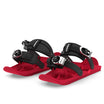
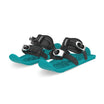












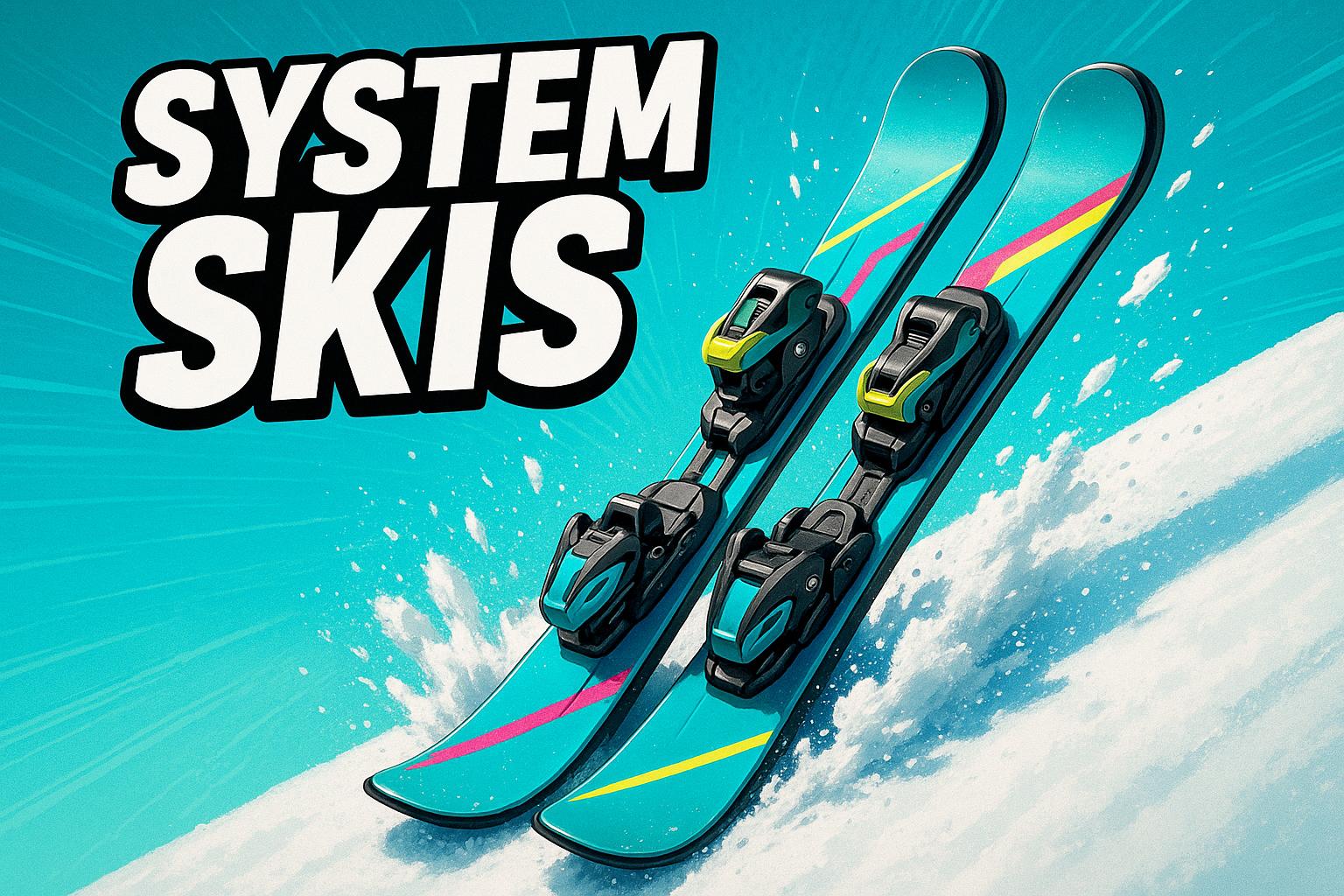




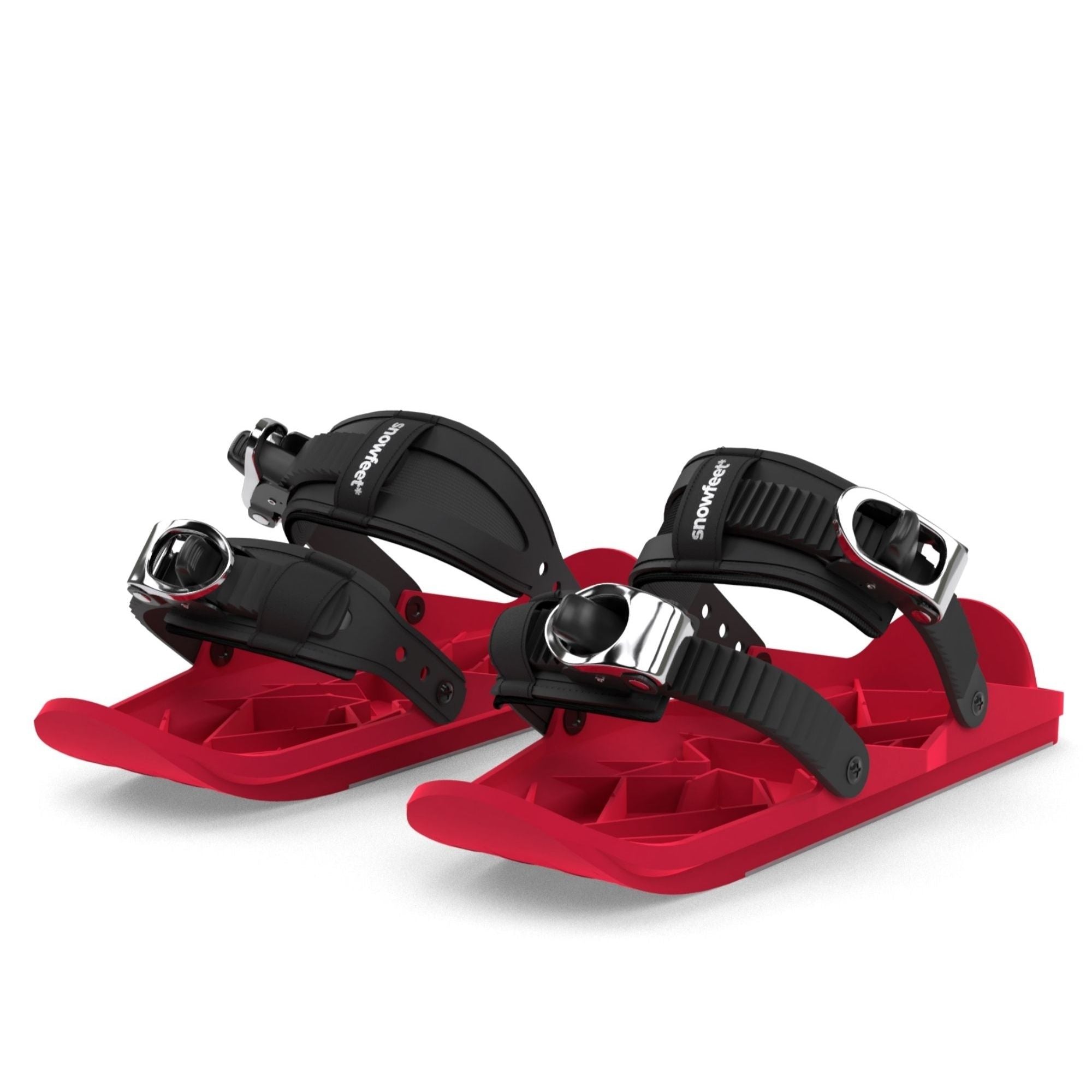
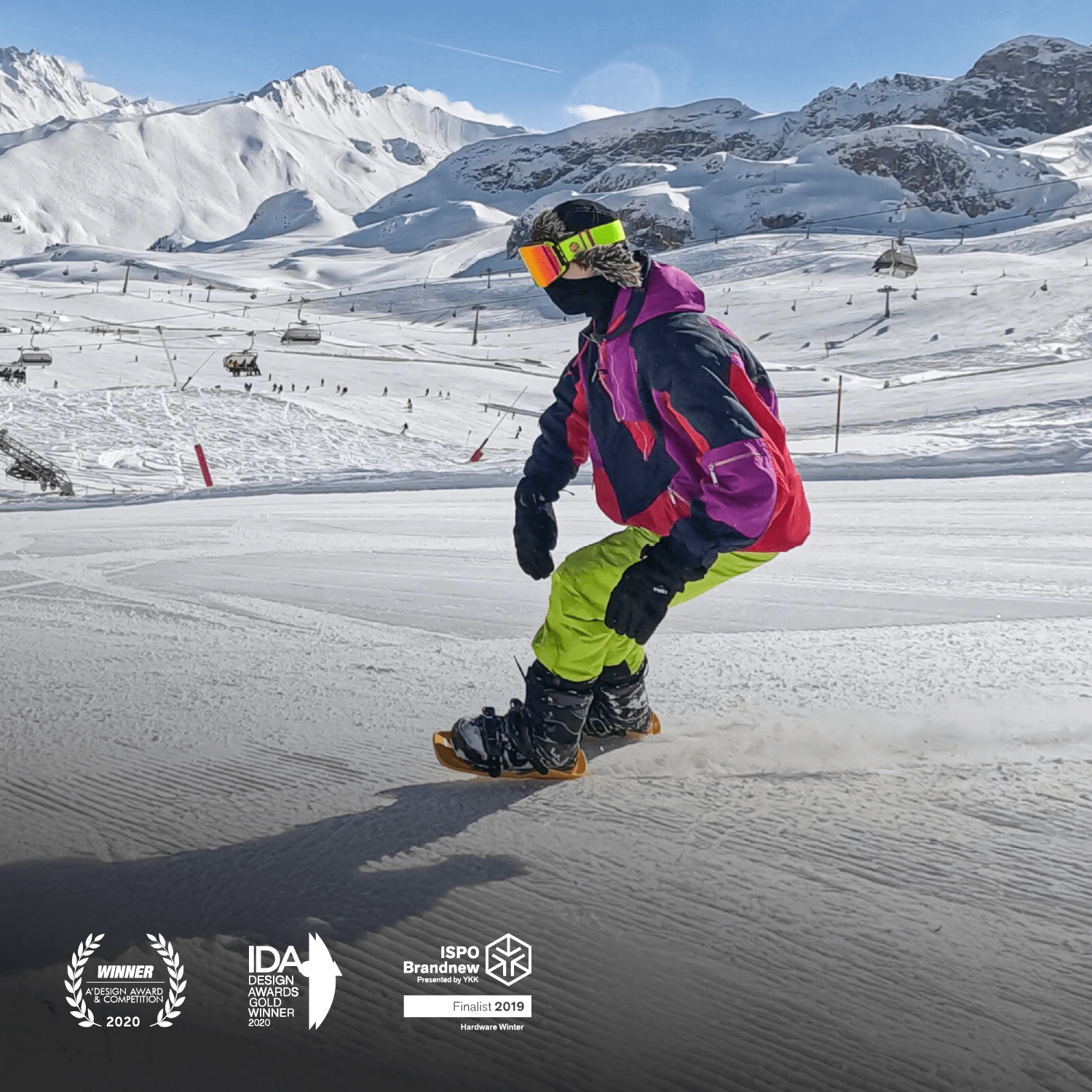




Zanechte komentář
Tento web je chráněn službou hCaptcha a vztahují se na něj Zásady ochrany osobních údajů a Podmínky služby společnosti hCaptcha.